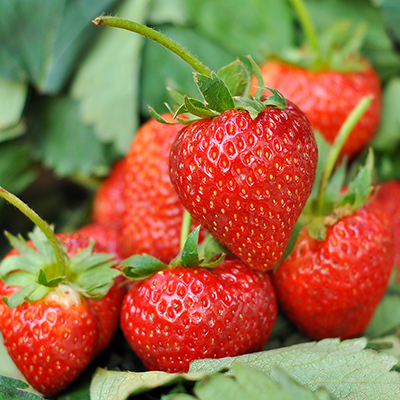How to Grow Rhubarb
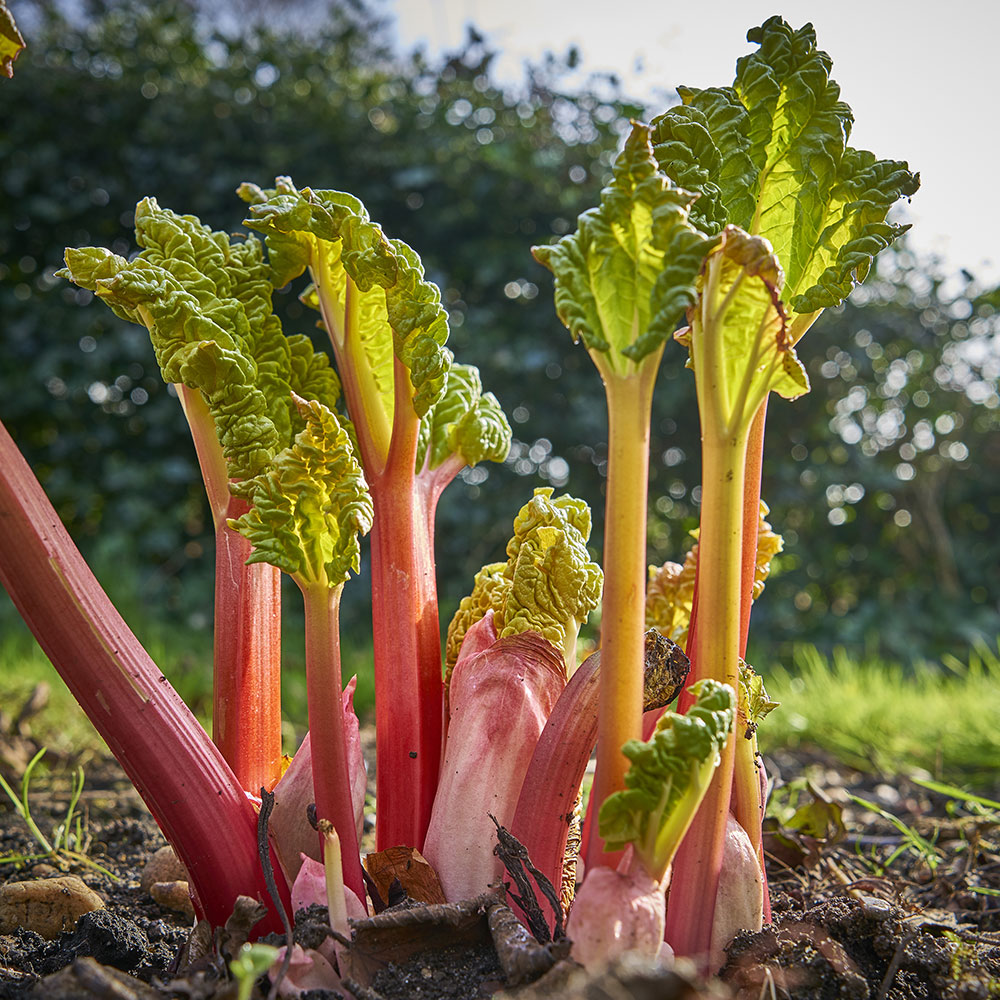
Last updated September 7, 2023
Discover the rewards of rhubarb. It’s big, beautiful, tasty and comes back every spring.
This tasty perennial is a vegetable, but it's often treated as a fruit in recipes. The tart, juicy stems make mouthwatering pies and delicious jams, especially when combined with strawberries. Once established, the plants produce for years without fail.
Depending on climate, rhubarb plants can grow 4 to 5 feet tall and wide, with huge, tropical-looking leaves borne at the ends of stout stems. Rhubarb is even showy enough to include as a foliage plant in ornamental flowerbeds.
Rhubarb is grown from seedlings and can be harvested from spring until early summer. It is perennial in hardiness zones 3 to 8. As a perennial vegetable, rhubarb needs a year to settle in. Plant seedlings in year one, feed and nurture, then prepare to harvest in the second year.
If you’re ready for rhubarb, here’s how to start a robust patch.
Difficulty:
Intermediate
Duration:
Under 2 hours
Table of Contents
Pick a Place to Plant
How to Plant Rhubarb
How to Maintain and Harvest Rhubarb
Rhubarb Cardamom Syrup Recipe
Pick a Place to Plant
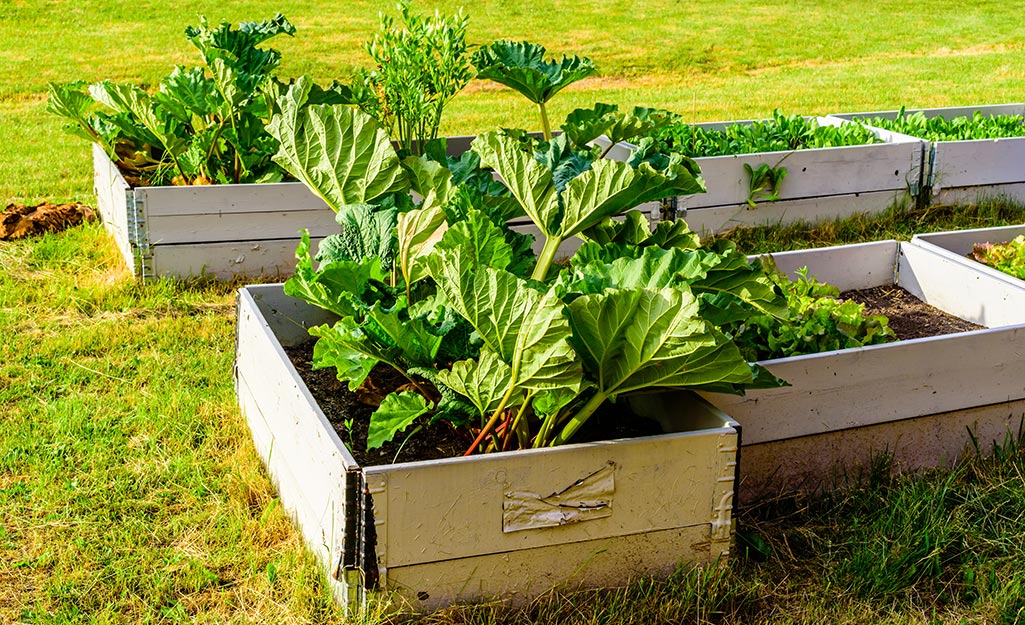
Select a planting spot for no more than three plants. Each plant will need one square yard of sunny, well-drained planting space.
For the most productive plants, you'll need a full sun site with at least 6 to 8 hours of sunlight. Just as important as sunlight is well-draining soil. Amend garden soil with organic compost to prevent root rot.
Rhubarb will grow in alkaline or acidic or neutral soil; in other words, the pH is not important and a soil test isn't necessary. It is, however, a heavy feeder and will appreciate extra care with compost and organic fertilizer.
Rhubarb likes to stretch its roots. Plant along the edge of the garden so it doesn’t crowd other plants.
How to Plant Rhubarb
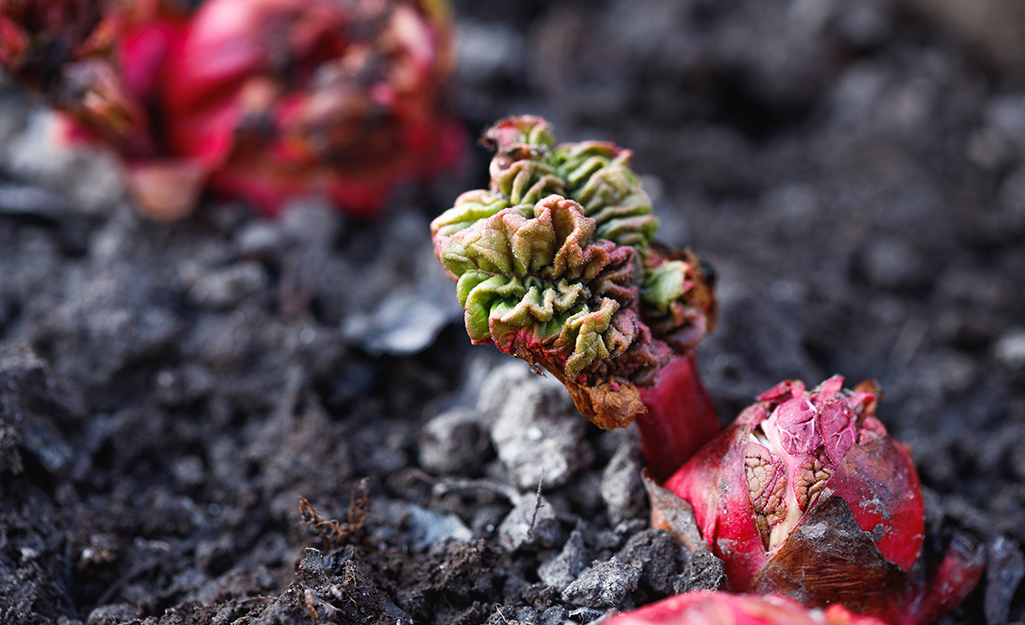
- When planting rhubarb, prepare the bed by loosening the soil down a foot deep, mixing in 4 inches of compost and adding a generous handful of a balanced organic fertilizer. Rake the soil into a slightly raised mound.
- Plant dormant root stubs facing down with rounded crown up.
- Cover with an inch of soil and mulch around the plants with straw or chopped leaves to keep the soil moist and smother weeds.
How to Maintain and Harvest Rhubarb
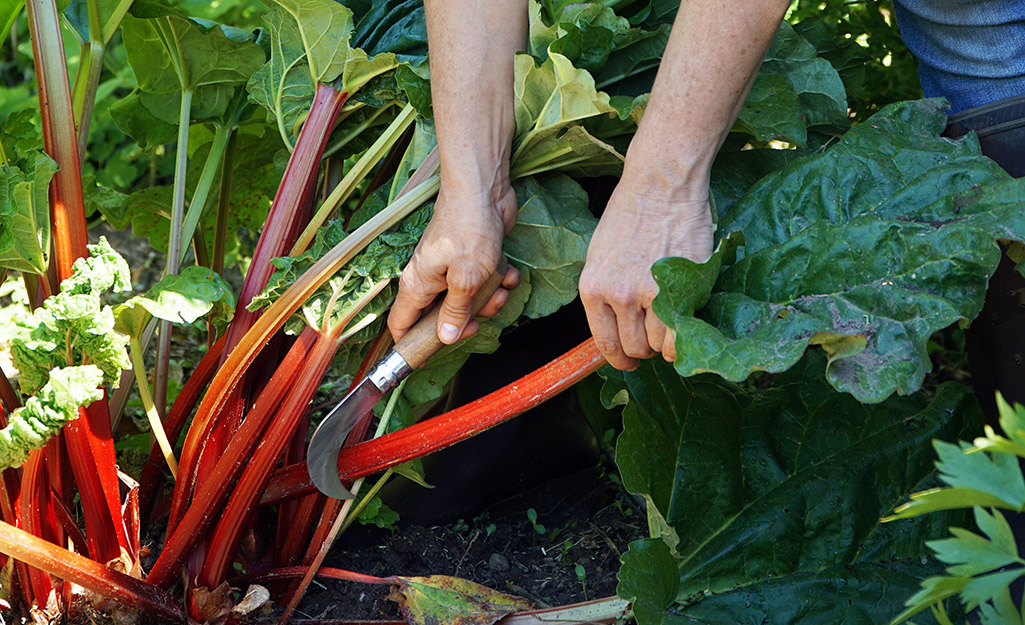
- Like most vegetables, rhubarb needs about an inch of water a week for growth, and more as the days get warmer. A soaker hose covered with mulch, or a drip irrigation system will make watering easier.
- Rhubarb's big leaves require frequent fertilizer doses. Look for a balanced organic fertilizer and follow label directions for application.
- Part of rhubarb's appeal is that it's one of the first crops in the spring garden. You'll need to wait until the second season after planting to harvest.
- Check the plant package directions for the mature size of the stalks. When the stems reach this length, it's time to harvest.
- You can harvest rhubarb with a knife (like a harvest knife), just be sure to wipe the blade frequently to prevent spread of any diseases.
- To harvest without a knife, hold the stalk firmly in hand, then pull and twist.
- It's important to remove the leaves from the plant immediately after harvest. Not only are the leaves toxic, but keeping them attached to the stalk accelerates decay.
- Continue to harvest rhubarb throughout the season.
Rhubarb Cardamom Syrup Recipe
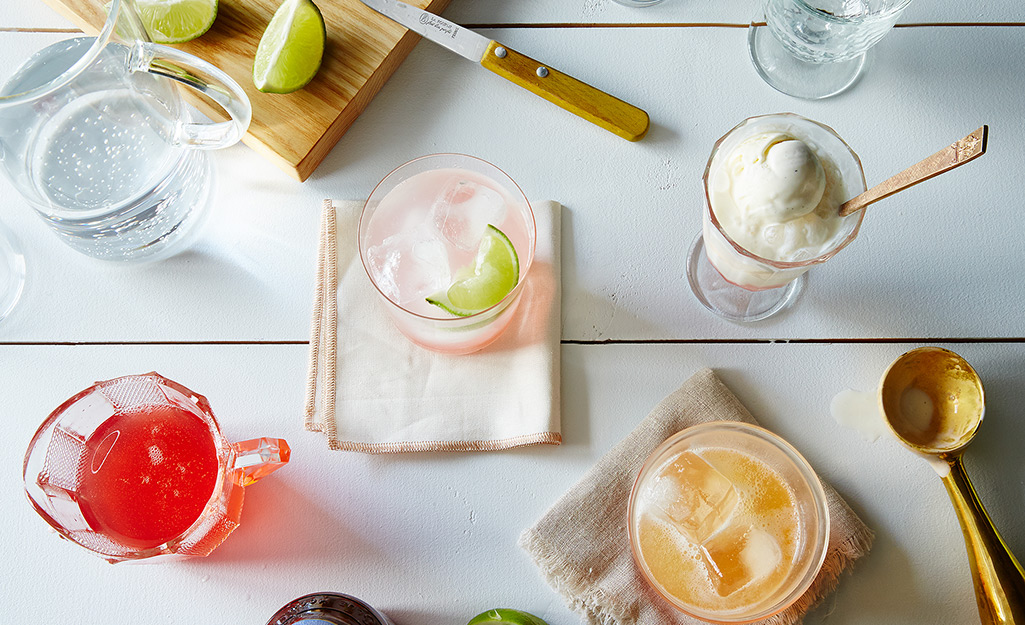
With rhubarb, remember that the bright red stalks are the edible part. Do not eat the leaves because they are toxic.
Rhubarb is extremely tart and is not usually eaten raw. It's usually cooked with a lot of sugar and paired with fruits like strawberry. Try your homegrown rhubarb in this recipe for Rhubarb Cardamom Syrup. Recipe provided by Food52.
Ingredients:
- 1 pound rhubarb stalks, chopped
- 4 cardamom pods, or more to taste
- 2 cups granulated sugar
- 2 cups water
- Juice of 1 1/2 lemons
Instructions:
In a medium, heavy-bottomed saucepan, combine the chopped rhubarb, cardamom pods and sugar. Do not turn on the heat—stir together so that the rhubarb and cardamom pods are covered in sugar and let it sit for at least 45 minutes.
Add the water and simmer the mixture over medium heat until the sugar dissolves. Once the sugar dissolves, continue simmering for 20 minutes until the rhubarb starts to break down and look stringy.
Turn off the heat and strain the syrup through a fine mesh strainer into a bowl so that you no longer have any rhubarb or cardamom pods in it.
Add the lemon juice to a new saucepan, pour in the syrup and bring the mixture to a simmer. Let it simmer over medium heat for 20 minutes. (If the syrup simmers too long, it will be quite weighty. So, keep this in mind if you are using it for drinks—the syrup will probably be thinner than you think it should be.) Remove from the heat and let cool completely before using. It will keep in the refrigerator in a sealed container for about a week.
Whether you need the right planters, seeds or potting soil, use The Home Depot Mobile App and have everything you need delivered to your doorstep.
